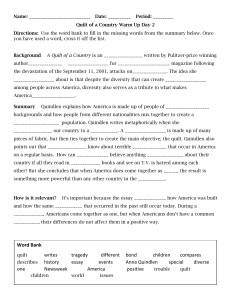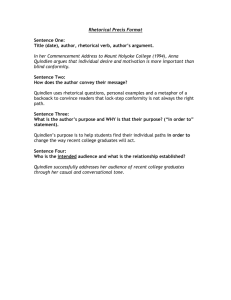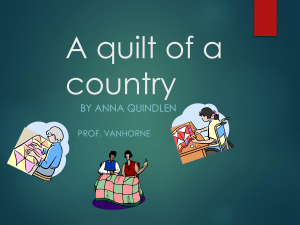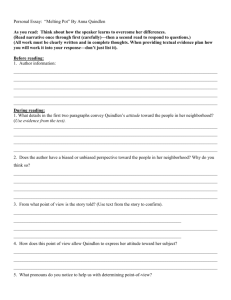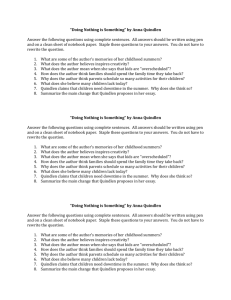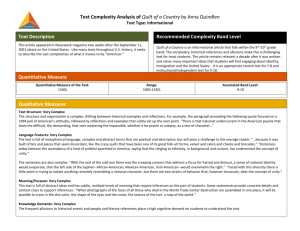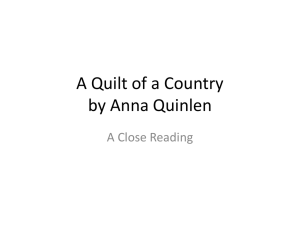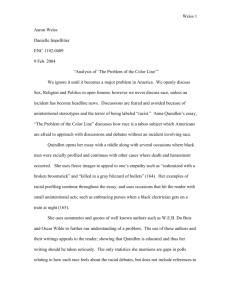“A Quilt of a Country” by Anne Quindlen Discussion Questions
advertisement
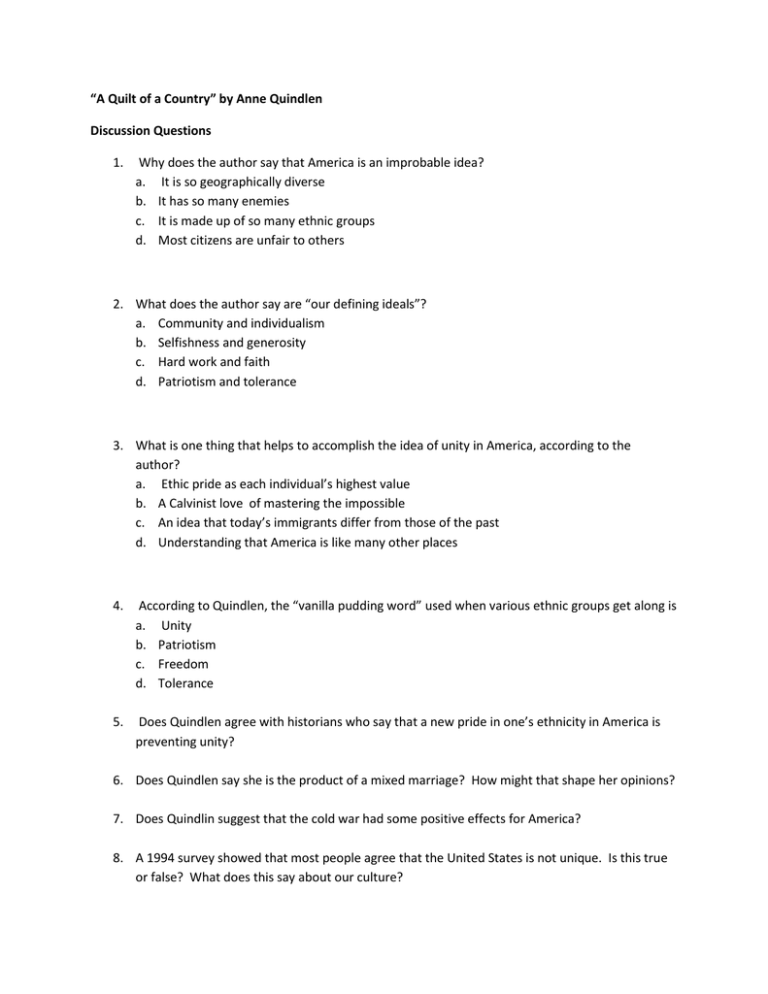
“A Quilt of a Country” by Anne Quindlen Discussion Questions 1. Why does the author say that America is an improbable idea? a. It is so geographically diverse b. It has so many enemies c. It is made up of so many ethnic groups d. Most citizens are unfair to others 2. What does the author say are “our defining ideals”? a. Community and individualism b. Selfishness and generosity c. Hard work and faith d. Patriotism and tolerance 3. What is one thing that helps to accomplish the idea of unity in America, according to the author? a. Ethic pride as each individual’s highest value b. A Calvinist love of mastering the impossible c. An idea that today’s immigrants differ from those of the past d. Understanding that America is like many other places 4. According to Quindlen, the “vanilla pudding word” used when various ethnic groups get along is a. Unity b. Patriotism c. Freedom d. Tolerance 5. Does Quindlen agree with historians who say that a new pride in one’s ethnicity in America is preventing unity? 6. Does Quindlen say she is the product of a mixed marriage? How might that shape her opinions? 7. Does Quindlin suggest that the cold war had some positive effects for America? 8. A 1994 survey showed that most people agree that the United States is not unique. Is this true or false? What does this say about our culture? 9. In the first paragraph, how does Quindlen compare the qualities of the United States to those of a quilt? How does she weave imagery throughout the essay? 10. What does the author mean by mongrel nation in the second sentence? Why does she return to that phrase in the second-to-last sentence of the essay? 11. Why does the author say “you know the answer” at the end of the third paragraph? How does that affect the tone of the piece and her relationship with readers? 12. What does the author mean when she says people were concerned that “the left side of the hyphen — African-American, Mexican-American, Irish American—would overwhelm the right”? 13. What can you infer about the author’s childhood and parent’s neighborhood? 14. How does one’s race, class, religion, and/or gender influence an individual’s goals or aspirations? How does this trouble the idea of the American Dream? 15. How do our own prejudices influence how we see others? 16. What does racism/sexism look like today? How do the media and other prominent figures contribute to sustaining stereotypes? 17. How do we define our own cultures? 18. What is the difference between assimilation and multiculturalism? 19. What is the tone of the piece? How do you know? 20. What is the mood of the piece? How do you know? 21. What is the overall message that Quindlen conveys about America? (Theme) 22. What questions does the text raise but not answer?
